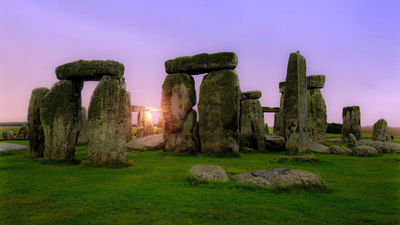How survivors of Pompeii rebuilt their lives after volcanic eruption revealed

The ancient city of
Pompeii: The New Dig - PREVIEW - YouTube
Records of Pompeii's survivors have been found – and archaeologists are beginning to understand how they rebuilt their lives
https://theconversation.com/records-of-pompeiis-survivors-have-been-founded-and-archaeologists-are-starting-to-understand-how-they-rebuilt-their-lives-230641
Pompeii and Herculaneum are cities that were destroyed by the eruption of Mount Vesuvius on August 24, 79 AD. Many of the residents were unable to escape the pyroclastic flow that hit them at a speed of 100 km per hour, and tens of thousands of people were buried alive under volcanic ash.

Some residents managed to escape the eruption, which lasted more than 18 hours, and the remains found in the cities represent only a fraction of the population at the time. Carts and horses have disappeared from stables, ships have disappeared from docks, and many artifacts thought to have been preserved in the volcanic ash have been lost.
Tuck devised a way to find survivors of the devastation of Pompeii and Herculaneum by looking at names unique to those places, such as 'Numerius Popidius' and 'Aulus Umbricius,' and examining records of people who lived in the surrounding areas after the eruption. He also looked for information on how nearby communities had improved their infrastructure to accommodate the survivors.

After eight years of sifting through a database of tens of thousands of Roman artifacts, from walls to gravestones, the researchers found evidence of more than 200 survivors in 12 cities, mostly from areas north of Vesuvius, which was less affected by the volcano.
Some survivors of the eruption of Mount Vesuvius thrived in new communities, such as the Cartilius family, who settled in
It is also known that the family of Aulus Umbricius, who moved to the port city of Pozzuoli , made a living through the family business of producing garum .

Not all of the survivors of the eruption found success in their new communities. Fabia Secundina, who had moved to Pozzuoli, married the gladiator Aquarius the Retiarius, but he died at the early age of 25, leaving Secundina in financial difficulty.
The poor families Avianii, Atilii and Masri are known to have settled in a small impoverished community called
As survivors rebuilt their lives in new communities, the Roman emperor also played a major role in the recovery, investing heavily in the area by rebuilding land damaged by the eruption and building new infrastructure for the displaced, including roads, water systems, amphitheaters, and temples.

Related Posts:







